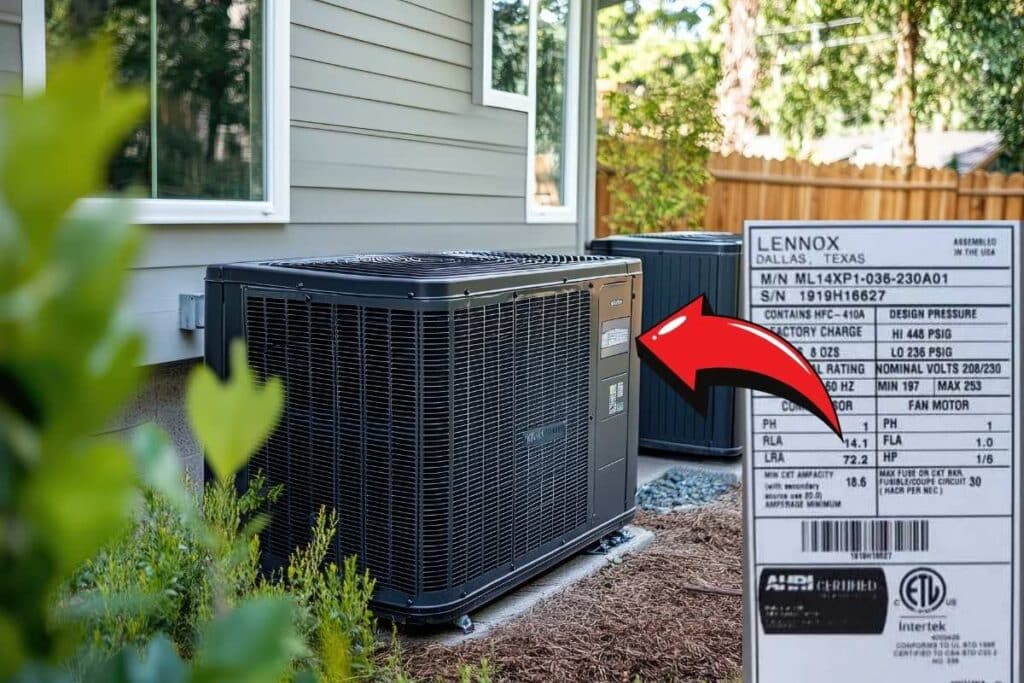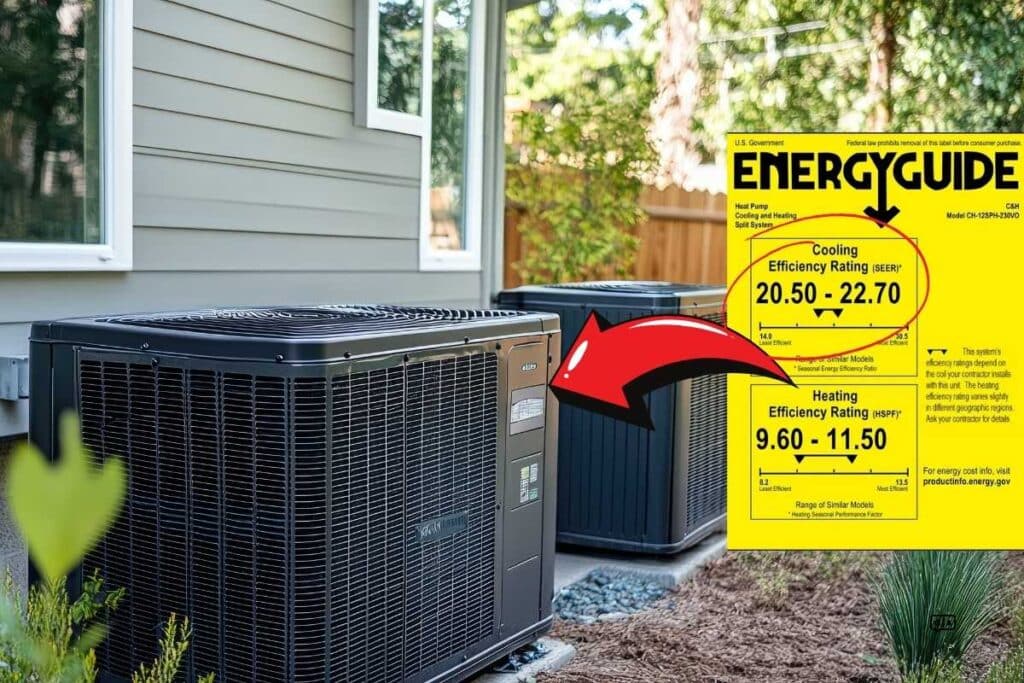The Seasonal Energy Efficiency Ratio (SEER) rating measures the efficiency of an air conditioning unit. Higher SEER ratings indicate better energy efficiency, which can translate into lower utility bills and reduced environmental impact. If you want to determine your AC unit’s SEER rating, follow these steps:
1. Look at the SEER Rating on the Manufacturer’s Nameplate

Find the nameplate or label on the outdoor condenser unit of your air conditioner. It is typically located on the side or back of the unit and contains important information such as the model number, serial number, and specifications.
- Some units have the SEER rating directly printed on the nameplate or a separate energy efficiency sticker.
- Look for the term “SEER” followed by a number (e.g., SEER 14, SEER 16).
- The SEER rating is usually on the yellow “EnergyGuide” sticker.

2. Decode the Model Number
If the SEER rating isn’t explicitly listed, you can often determine it from the model number:
- Write down the full model number from the nameplate.
- Identify the SEER rating embedded in the model number.
- For example, in model number XYZ16ABC, the “16” indicates a SEER rating 16.
Our website offers comprehensive information on HVAC model numbers across all manufacturers. To access this data, simply use the search function to find the specific (brand) model number you’re interested in.
3. Check the AHRI Certification
Use the Air Conditioning, Heating, and Refrigeration Institute (AHRI) Directory to find the SEER rating:
- Visit the AHRI Directory online (ahridirectory.org).
- Enter your unit’s model and serial numbers in the search bar.
- Review the results for the SEER rating and other efficiency metrics.
4. Refer to the User Manual or Product Documentation
If the SEER rating isn’t readily visible on the unit, check the manufacturer’s user manual or product brochure. Manufacturers list SEER ratings and other performance details in the documentation.
5. Contact the Manufacturer or HVAC Professional
Contact the manufacturer directly if you cannot find the SEER rating through the label, model number, or manual. Provide them with the unit’s model and serial numbers for assistance. Alternatively, an HVAC professional can inspect the unit and provide the SEER rating.
What Does the SEER Rating Mean?
SEER, or Seasonal Energy Efficiency Ratio, is a metric used to evaluate the efficiency of air conditioning systems. A higher SEER rating indicates greater energy efficiency, which can lead to reduced energy costs and a more sustainable operation.
- Efficiency Measure: The SEER rating measures an air conditioner’s cooling output (BTUs) divided by the energy it consumes (watts) over a typical cooling season.
- Efficiency Scale: Modern air conditioners typically range from SEER 13 (minimum) to SEER 25 or higher for advanced systems.
Why Does Knowing Your SEER Rating Matter?
- Energy Savings: Higher SEER ratings reduce electricity usage, saving you money on utility bills.
- Rebates and Incentives: Many energy efficiency programs offer rebates for systems with high SEER ratings.
- Environmental Impact: High-SEER systems reduce greenhouse gas emissions due to lower energy consumption.
When to Upgrade Your AC?
If your AC unit is over 10 years old and has a SEER rating below 13, it might be time to consider an upgrade! Older units can be less efficient and may be getting close to their lifespan. By switching to a newer model with a higher SEER rating, you could enjoy better efficiency and potentially save on energy costs. It’s a great way to stay comfortable while being kind to your wallet!
Key points to consider:
- Age of the unit: Generally, if your AC is over a decade old, it’s a good time to evaluate upgrading, even if it’s still functioning.
- Low SEER rating: If your current AC has a significantly low SEER rating, upgrading to a higher one can result in noticeable energy savings.
- Frequent usage: A higher SEER unit can lead to greater cost savings over time if you use your AC heavily.
- Maintenance issues: An upgrade might be worthwhile if your AC requires frequent repairs or has noticeable performance issues.
Following these steps, you can identify your air conditioner’s SEER rating and better understand its efficiency. This information is valuable when considering upgrades or calculating energy costs.






